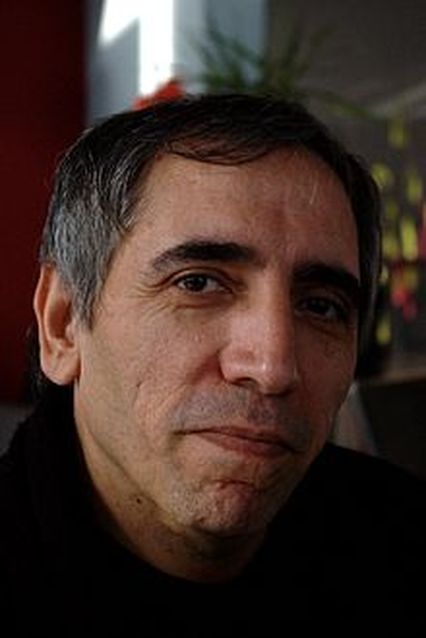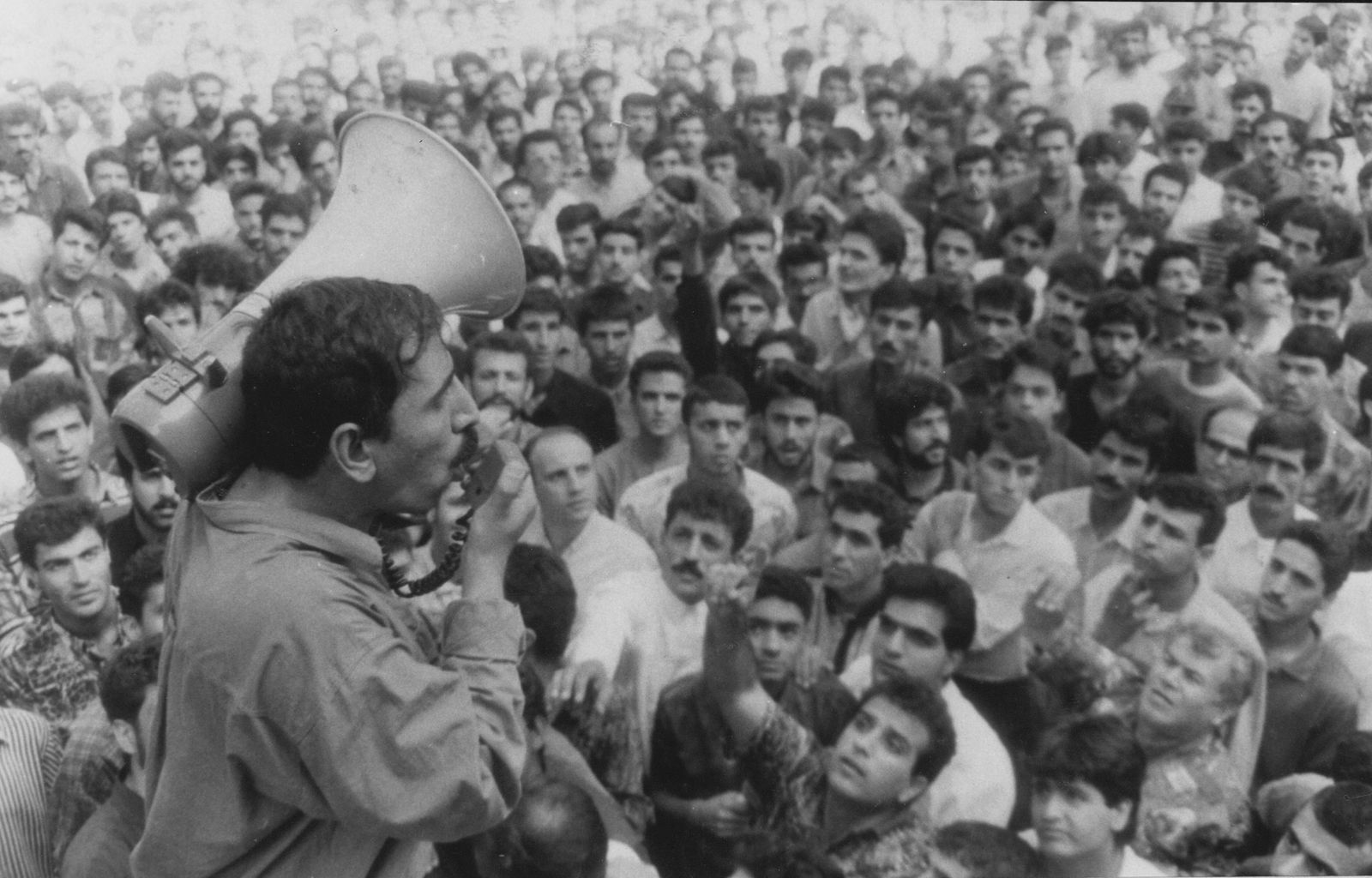The Iranian monarch, who has 84 wives and 200 children, is against the cinema. But at his first encounter with cinema he falls in love with the heroine of the movie. So intense is the King's passion that he gives up his kingdom and Harem for the sake of his beloved, and becomes a film actor.
"The films used in this ensemble, have been selected on the basis of the functions they could perform in my general design. From Haji Haka, aktor-e sinema, the first Iranian film which was directed by Ebrahim Khan the Photographer, I have taken the general plot outline for my film. Dokhtar-e Lor, the second film in Iranian history, and the first Iranian talkie, provided me with the personality of the first Iranian film heroine. A Banquet in Hell was selected as the first Iranian film in which special effects were used, while Qeysar and Gav were included as two remarkable films which influenced a decade of the intellectual cinema in the country. In the final analysis, I could say that Ruzi ruzegari cinema... is a fantasy on the pattern of fairy tales of One Thousand and One Nights, which presents a condensed history of Iranian cinema and expresses the love of cinema in general." (Mohsen Makhmalbaf)
Biography
film director

Mohsen Makhmalbaf
Born in 1957 in a poor quarter of Tehran, Mohsen Makhmalbaf had to do more than a dozen of odd jobs lo earn his own and help support his mother between the age of eight and seventeen. When he was 15, he engaged in clandestine activity through a guerrilla group he himself had organized. Al 17, he was shot and arrested when trying to disarm a policeman and spent four and a half years in prison.
Released during the 1979 revolution, he quit all political activity and went in for literature and cinema. His published work includes about twenty volumes of novels and dramaturgy, film scripts and essays on art, some of which haze been translated into Turkish, Arabic, Urdu, Kurdish and English. With several scripts in addition lo the ones he had personally filmed, two documentaries and 20 movies edited by him, Makhmalbaf is the most prolific Iranian director of the last two decades.
His fourteen films made in as many years have invariably been, for one reason or another, controversial at home and abroad. The Peddler, The Cyclist, Marriage of the Blessed, Time for Love, Once Upon a Time, Cinema, The Actor and Salaam Cinema have so far been presented at 170 international film festivals and screened in 40 countries, with 22 prizes won among them. The awards include the top prize at the Rimini International Film Festival (Italy, 1989) and the East-West Award al the Hawaii International Film Festival (Usa, 1991) for The Cyclist; the First Prize of the Taormina International Film Festival (Italy, 1992), the jury's Special Award and the Fipresci film critics' award at the Karlovy Vary International Film Festival (Czechoslovakia, 1992), and the jury's Special Award at the Istanbul International Film Festival (Turkey, 1992) for Once Upon a Time, Cinema; and the Critics' Award (Sao Paulo, Brasil, 1995) for all his works.
FILMOGRAFIA
Film di finzione/Fiction Films
Tobe-ye Nasuh (Nasooh's Repentance/Pentimento definitivo, 1982).
Do cheshm-e bi su (Two Sightless Eyes/Due occhi senza luce, 1983).
Estèaze (Seeking Refuge in God/Rifugiarsi in Dio, 1984).
Baycot (Boycott/Il boicottaggio, 1985).
Dastforush (The Peddler/L'ambulante, 1986).
Baysilkeran (The Cyclist/Il ciclista, 1987).
'Arusi-ye khuban (The Marriage of the Blessed/Il matrimonio dei benedetti, 1988).
Nobat-e asheqi (Time of Love/Tempo d'amare, 1990).
Shabhay-e Zayandeh Rud (Nights on the Zayandeh Rud/Notti sullo Zayandeh Rud, 1990).
Ruzi ruzegari cineina/Nasseroddin Shah, hactore cinema (Once Upon a Time, Cinema/C'era una volta il cinema, 1991).
Honar Pishé (The Actor/ L'attore, 1992).
Salaam Cinema (Salam Cinema, 1994).
Gabbeh (idem, 1995).
Nun va goldun (A Moment of Innocence/Un istante di innocenza,1996).
Documentari/Documentare
Gozideh tasvir dar doran-c Qajar (A Selection of Images from Qajar Era/Una selezione di immagini del periodo Qajar, 1992).
Sang-o shisheh (The Stone and the Glass/La pietra e il vetro, 1993).
Cast
& Credits
Director of photography: Nemat Haqiqi, Faraj Heydari.
Special effects: Iraj Taqipur.
Costume designer: Hassan Farsi.
Trucco: Abdollah Eskandari.
Montaggio del materiale di repertorio: Davud Yusefian.
Music: Majid Entezami.
Sound: Ahmad Asgari; Manuchehr Esina'ili, Parviz Bahram.
Cast and characters: Ezatollah Entezami (Mozafareddin Shah, Nasereddin Shah, Mash Hassan), Melidi Hashemi (Akkas Bashi, il fotografo), MohammadAli Keshavarz (Farrash Bashi), AkbarAbdi (Malljak), Dariush Arjmand (Amir Kabir), Moharram Zaynalzadeh (il ciclista).
Production company: Masud Jafari Jozani - Mohammed-Mehdl Dadgu.
Foreign sales agent: Farabi Cinema Foundation, 55 Sie-Tir Avenue, 11358 Tehran, Iran, tel. +98-21-671010, fax +98-21-678155.


